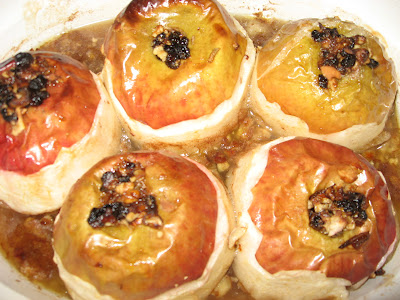I roamed around a Williams-Sonoma outlet store Saturday and came home with a Ruffoni copper Polenta pot. My memories of polenta come from my Italian mother-in-law. She stood at her stove and stirred and stirred her polenta while her grandchildren hovered nearby with their little bowls. When it was ready, she stirred in butter and a big handful of white shredded cheese and they each got a nice scoop of creamy golden polenta. They just added a little more butter on top and they loved it just like that. She usually made stew to serve over it. She poured the leftover polenta into a bread pan to set up to slice and fry for a later meal. I make it now the same way she did--sometimes with long cooking--sometimes the quicker instant.

I was pretty anxious to use my new pot yesterday, so I made a pot of beef stew in my dutch oven first to serve over it. I made instant polenta because I had some and it's fast. I like the softness of good instant polenta. I have the instructions below for the basic long-cooking method that I also use. When my polenta was done, I stirred in 1/4 cup butter and a big handful of shredded Monterey Jack cheese. (You can add Parmesan, Fontina or any good melting cheese.)
After stirring through the cheese, I served a scoop on each plate and we had beef stew over it:
SIMPLE BEEF STEW
6 servings
2 to 2-1/2 lbs. cubed beef stew meat (sometimes I use venison)
1 yellow onion
about 10-12 pearl onions
8 oz. white button mushrooms, sliced
6 carrots, peeled and cut into chunks
salt and freshly-ground pepper
1 sprig thyme, optional
butter, canola or olive oil (I use a mixture of butter and oil because the butter helps in browning)
2 tblsp. flour whisked into 1/4 cup water
chopped fresh Italian parsley to sprinkle on top
Heat some butter and oil in a heavy pot over medium heat (I love the coated iron dutch oven). Add half the mushrooms. Allow them to brown on one side, add salt and pepper to taste and stir and turn them over to lightly brown the other side. Remove them to a dish. Saute the rest of them the same way and remove to the dish. Add the peeled pearl onions to the oil/butter mixture (add more, if needed) and lightly brown them to caramelize. Remove the onions to the mushroom dish. Hold them until the meat is tender at the end. Add a bit more oil/butter if needed and start browning the stew meat. Have the patience to caramelize the meat well--only cook some of it at a time to prevent crowding it. If you put too much in at once it will steam rather than brown. The slow browning and seasoning of each ingredient at a time is what gives the stew good rich flavor. When the meat is well browned, turn the heat to low. Allow it to cool down to a simmer and add all the browned meat back into it. Cut the yellow onion in quarters and add it to the meat. If you want thyme, add it now. Add about 1/2 inch of hot water to the meat and cover it. Allow the meat to simmer 1-1/2 to 2 hours until it's tender. Keep adding small amounts of hot water if it cooks down too low. When the meat is tender, remove and discard the onion quarters and thyme and add the carrots, the pearl onions and the mushrooms. Add more hot water, if needed. Cover and simmer until the carrots are tender. Whisk the flour/water mixture into the stew. Simmer a couple minutes to thicken. Taste for seasoning--add salt and freshly ground pepper, if needed. Spoon over polenta and sprinkle with fresh parsley.

Basic Polenta to make 6 servings:
Instant polenta has a softer, smoother texture, medium cornmeal will make polenta with more texture and coarsely-ground cornmeal will, of course, give the most texture. I use the medium most often. Cooked polenta can be kept hot in a bowl over a large pot of simmering water.
Bring 10 cups of water to a simmer. Add 1 Tblsp. salt now. While whisking vigorously, pour the polenta into the salted water in a thin stream. Keep whisking until the mixture is smooth to prevent lumps. Lower the heat and bring back to a boil. Stir often with a wooden spoon that is straight across the bottom to allow the bottom of the pot to be scraped well to prevent sticking. When the bubbling starts again, turn the heat to low to get continuous, but slow cooking. Stir very frequently, especially toward the end as it gets very thick. Be careful of the spattering. Cook for about 30 minutes. It is done when it starts to pull away from the sides of the pot. Remove from heat. You may add butter and/or cheese at this point and serve. Or you may pour it into a pan (bread pans work well) to firm up to slice and fry at a later time. Fried slices of polenta can be served with stew over them, with tomato sauce and cheese or with a good wild mushroom sauce poured over or even for breakfast with syrup.






























